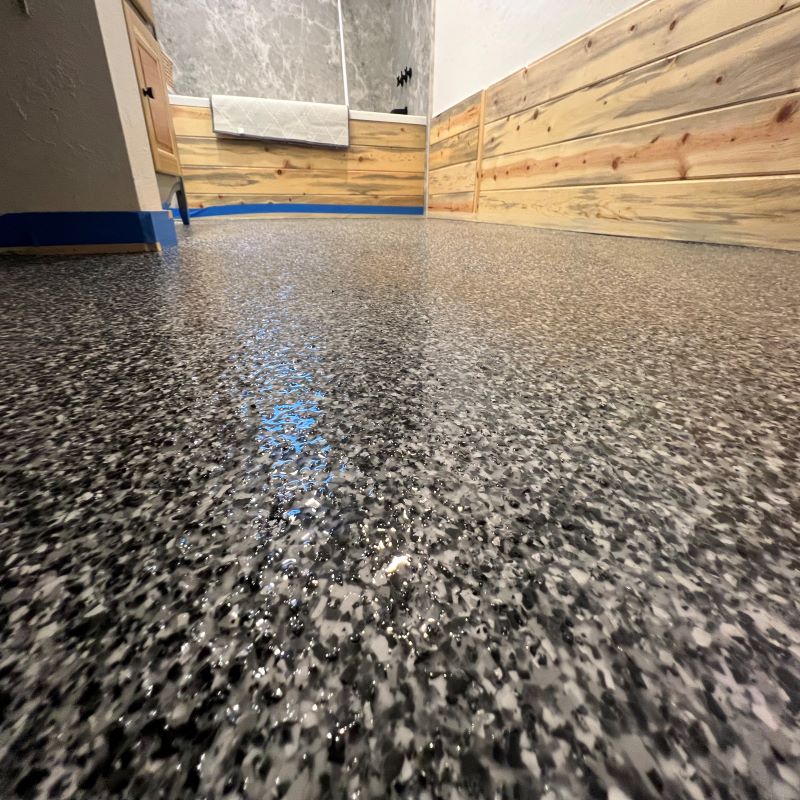The Importance to Prepare for Epoxy Floor Installation
Epoxy floor installation is a common choice for businesses and homeowners alike looking to create a durable, aesthetically pleasing, and low-maintenance surface. Yet as with any construction process, having the knowledge of how to properly prepare for epoxy floor installation can make all the difference in terms of results. Taking time to understand what preparations need to be made before installation – such as prepping your slab or substrate – is key to ensuring you get the perfect epoxy finish that lasts well into the future.
The preparation process before installing an epoxy floor
Before installing an epoxy floor, it is necessary to take specific steps to ensure that the surface is properly prepared. First, the area should be thoroughly cleaned using a degreaser so that any debris or grease that things could prevent the epoxy from bonding properly are removed entirely. Second, damaged parts of the concrete need to be patched with a patching compound and allowed to dry completely. Finally, the concrete should be acid-etched for optimal adhesion of the epoxy as well as primed with a two part primer for sealing any holes or cracks. Following these preparatory steps is essential for ensuring successful installation of epoxy floors and subsequent high performance over a long period of time.

Epoxy Floor Installation
The different types of epoxy flooring and choose the right one for your job
When it comes to epoxy flooring, there is no one-size-fits-all solution. Depending on your requirements and needs, there are several types of epoxy flooring that can be used. One common choice is a solid color epoxy – this offers stunning colors in a monochrome look. For heavy duty applications, you can opt for self-leveling or broadcasted chip epoxy – these are highly durable and abrasion resistant. For decorative decorative looks, metallic and marble aggregate coatings can make unique patterns or simulate wood, stone or terrazzo. To ensure you choose the right one for your job, it’s important to understand each type of epoxy flooring and its benefits before making a decision.
Clean, prep and repair any surface imperfections prior to installation
Prior to installing an epoxy floor, the environment must be properly prepared. This includes cleaning the surface to remove dust, dirt and other contaminants that could interfere with adhesion of the epoxy materials. Any imperfections in the surface must also be adequately addressed; this could mean repair or removal of damaged areas. These processes help ensure a flawless finish to your epoxy floor installation and can add years of life and enjoyment to your space.
Measure and mark the area accurately to ensure proper installation
When beginning an epoxy floor installation, measuring and marking the area accurately is essential in order to set a successful foundation. A mistake in measurements can be costly — leading to potential problems such as cracking or inadequate coverage of the floor. To avoid any mistakes, it is highly recommended that you measure twice and mark once for best results. By taking the time to measure and mark properly, it will ensure a beautiful and professional finish for your epoxy floor installation.

Epoxy Floor Installation Services
Protect baseboards, cabinets and other items from spills during installation
Taking the necessary precautions to protect baseboards, cabinets, and other surfaces from spills during the installation of an epoxy floor is crucial. Before beginning any installation project, it is important to identify those areas surrounding the intended work site that are prone to potential spills and prepare accordingly. Preparation may include covering indoor furnishings such as furniture and appliances with plastic sheets or other type of protective material in order to shield them from damages caused by accidental spills. By doing so prior to the commencement of the project, costly repairs are often avoided and further supplemental expenditures can be prevented.

